
Roots
The quiet observation of a single strand of hair, perhaps caught on a brush or illuminated by morning light, reveals a universe of intricate design. It is a testament to nature’s engineering, a structure both delicate and remarkably resilient. For generations, textured hair, with its unique coils, curls, and waves, has been a source of both profound personal identity and deep cultural expression. When signs of damage appear—a subtle dullness, a reluctant curl, or a feeling of brittle dryness—a natural curiosity arises.
Can something truly restore its original strength, or are we simply masking a deeper need? This contemplation leads us to the heart of our inquiry ❉ the capabilities of silk proteins in hair care.

Hair Anatomy and the Dance of Damage
At its fundamental level, hair is a complex protein filament, primarily composed of a robust protein called Keratin. This protein is a marvel, structured in precise ways to provide strength and flexibility. Think of hair as a microscopic cable, with layers of protection and internal supports. The outermost layer, the Cuticle, consists of overlapping scales, much like shingles on a roof, shielding the inner core.
Beneath this protective shield lies the Cortex, which gives hair its strength, elasticity, and color. At the very center, some hair types possess a medulla, a softer, sometimes absent, core.
Damage to hair manifests when these structures are compromised. Heat styling, chemical treatments like coloring or relaxing, and even daily manipulation can disrupt the delicate protein bonds within the hair shaft, particularly the disulfide bonds crucial for hair’s integrity. This disruption can lead to a lifting or chipping of the cuticle, exposing the cortex to further harm. The hair then loses its smoothness, its ability to hold moisture, and its inherent strength, often resulting in a dry, rough texture and increased breakage.
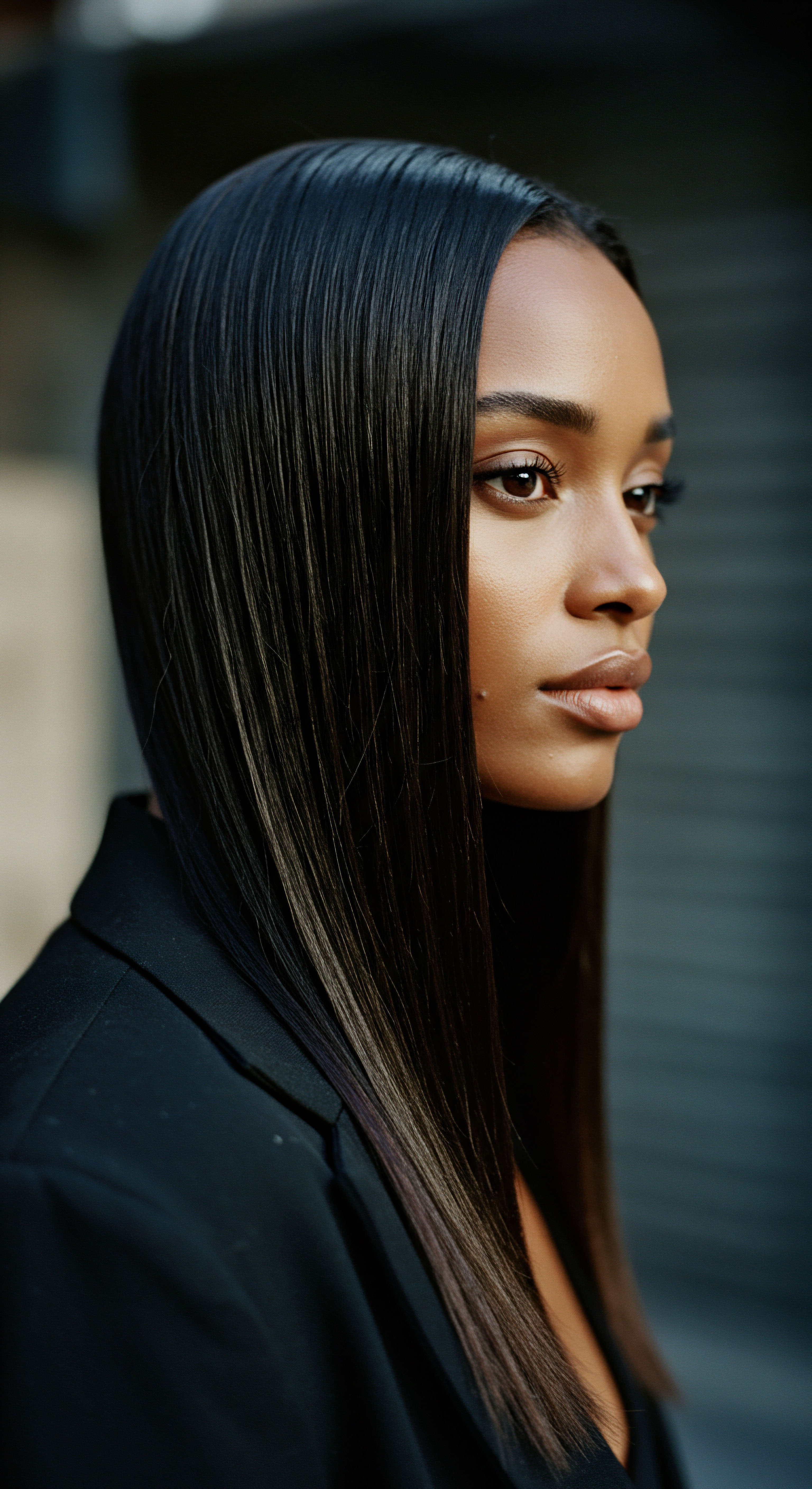
What Are Silk Proteins?
From the cocoons of the silkworm, Bombyx mori, come the proteins that have graced human adornment and care for centuries. Silk comprises two main proteins ❉ Fibroin, the structural core, and Sericin, a sticky, gummy protein that binds the fibroin strands together in the cocoon. For cosmetic applications, these proteins are often hydrolyzed, meaning they are broken down into smaller components, often peptides or amino acids, through a process involving water. This hydrolysis is a critical step, as it determines the molecular weight of the silk proteins, influencing how they interact with hair.
Hair, a marvel of natural design, finds its core strength in keratin, a protein susceptible to environmental and chemical disruptions.
Hydrolyzed silk proteins are celebrated for their composition, which includes a range of amino acids. These amino acids are building blocks, some of which bear a resemblance to the amino acids found naturally in human hair’s keratin. This similarity is often cited as a reason for their purported benefits. When applied to hair, these smaller silk protein fragments are believed to interact with the hair’s surface and potentially beyond.
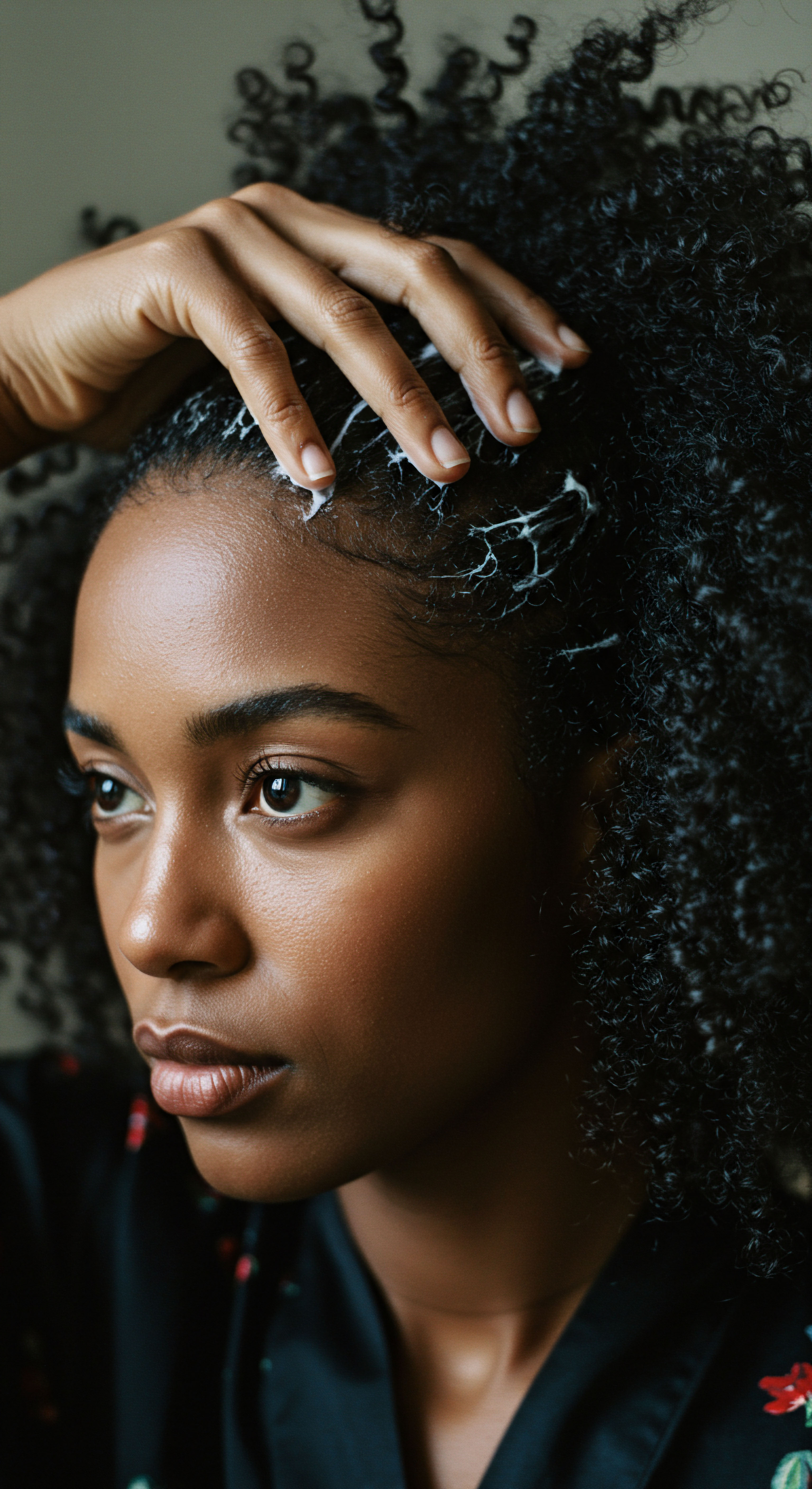
Early Insights into Hair Interaction
The initial understanding of silk proteins’ interaction with hair centers on their ability to form a protective film. This film, primarily from the sericin component, acts as a barrier, reducing water loss and shielding hair from external aggressors. This protective layer helps to smooth the cuticle, contributing to a shinier, softer appearance. The water-attracting properties of silk proteins also play a part, drawing moisture to the hair’s surface, which can temporarily improve hydration and manageability.
Consider the composition of silk proteins and their cosmetic uses:
- Fibroin ❉ The primary structural protein of silk, known for its mechanical properties and often used in skincare due to its glycine and alanine content.
- Sericin ❉ The gummy protein that surrounds fibroin, valued in hair care for its hydrophilic nature, film-forming capabilities, and ability to bind to hair.
- Hydrolyzed Silk Proteins ❉ Silk proteins broken down into smaller peptides or amino acids, allowing for easier incorporation into products and potentially deeper interaction with hair.
This foundational understanding sets the stage for a more nuanced exploration of whether these benefits represent true reversal of damage or a more transient, though still valuable, form of relief.

Ritual
Stepping into the realm of daily hair care, we acknowledge the quiet moments of dedication, the careful selection of products, and the hope that each application brings us closer to healthy, resilient strands. This is where the theoretical promise of silk proteins meets the practical reality of our routines. The query of silk proteins’ efficacy extends beyond mere molecular structure into the lived experience of their application. Do these rituals truly mend, or do they offer a comforting, yet temporary, reprieve?
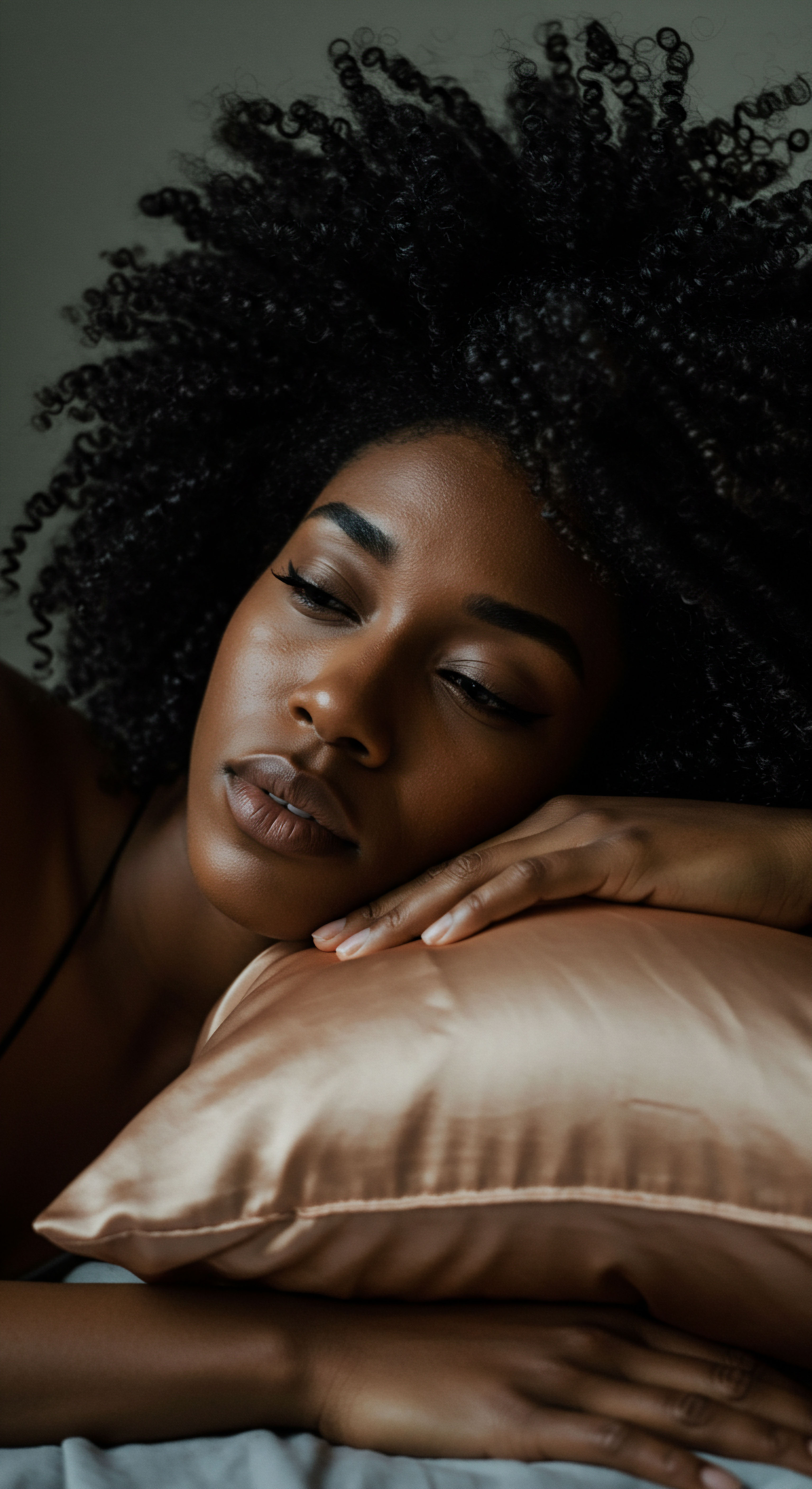
Application and Surface Effects
Silk proteins commonly appear in a variety of hair care products, including shampoos, conditioners, leave-in treatments, and masks. Their inclusion is often predicated on their immediate, visible benefits. When a product containing hydrolyzed silk protein is applied, the protein molecules, particularly those with a higher molecular weight, tend to deposit on the hair’s surface. This deposition creates a fine, protective film.
This film acts as a smoothing agent, helping to lay down lifted cuticle scales. The result is hair that feels softer, appears shinier, and is easier to detangle. This film also helps reduce friction between hair strands, which can lessen mechanical damage during styling.

Temporary Comfort and Cosmetic Enhancement
The immediate benefits of silk proteins are undeniable and contribute significantly to the user’s perception of improved hair health.
- Improved Smoothness and Shine ❉ By coating the cuticle, silk proteins reduce surface roughness, reflecting light more evenly and giving hair a lustrous appearance.
- Enhanced Manageability ❉ The smoothing action and reduced friction make combing and styling easier, lessening the likelihood of breakage from manipulation.
- Moisture Retention ❉ Hydrolyzed silk proteins possess hydrophilic properties, meaning they attract and hold water. This can lead to increased moisture content in the hair, temporarily alleviating dryness and improving elasticity.
These effects are primarily cosmetic. They enhance the hair’s appearance and feel, making it seem healthier and more vibrant. However, the transient nature of these benefits warrants closer inspection. When the product is washed away, the film and the associated moisture-binding effects largely diminish, requiring continuous application to maintain the desired aesthetic.
Silk proteins provide immediate cosmetic improvements, coating hair for smoothness and moisture, yet these benefits typically require consistent application.

A Closer Look at Moisture and Elasticity
One of the celebrated aspects of silk proteins is their capacity to influence hair’s moisture balance. Research indicates that hydrolyzed silk protein can bind moisture, contributing to improved hydration and elasticity. For instance, a study published in the Journal of Biomaterials Applications noted that sericin, one of the silk proteins, can retain water in a manner similar to hyaluronic acid, a well-known hydrating agent. This property is particularly beneficial for textured hair, which often struggles with retaining moisture due to its unique structure and increased cuticle lifting.
This moisture-binding ability can temporarily restore a sense of suppleness to dry, brittle strands, making them less prone to snapping. While this does not reverse structural damage to the hair’s internal keratin network, it does provide a crucial protective and conditioning effect that can prevent further damage. The ongoing application of silk protein-containing products thus becomes a ritual of maintenance, a continuous act of care that shields the hair from daily aggressors and helps preserve its integrity.
| Benefit Category Enhanced Shine |
| Mechanism of Action Surface film formation, cuticle smoothing |
| Primary Effect Improved light reflection |
| Benefit Category Increased Softness |
| Mechanism of Action Reduced friction, conditioning layer |
| Primary Effect Smoother feel to the touch |
| Benefit Category Better Manageability |
| Mechanism of Action Decreased tangling, reduced static |
| Primary Effect Easier combing and styling |
| Benefit Category Moisture Retention |
| Mechanism of Action Hydrophilic properties, water binding |
| Primary Effect Temporary hydration boost |
| Benefit Category These effects are primarily cosmetic and temporary, relying on continuous product use. |
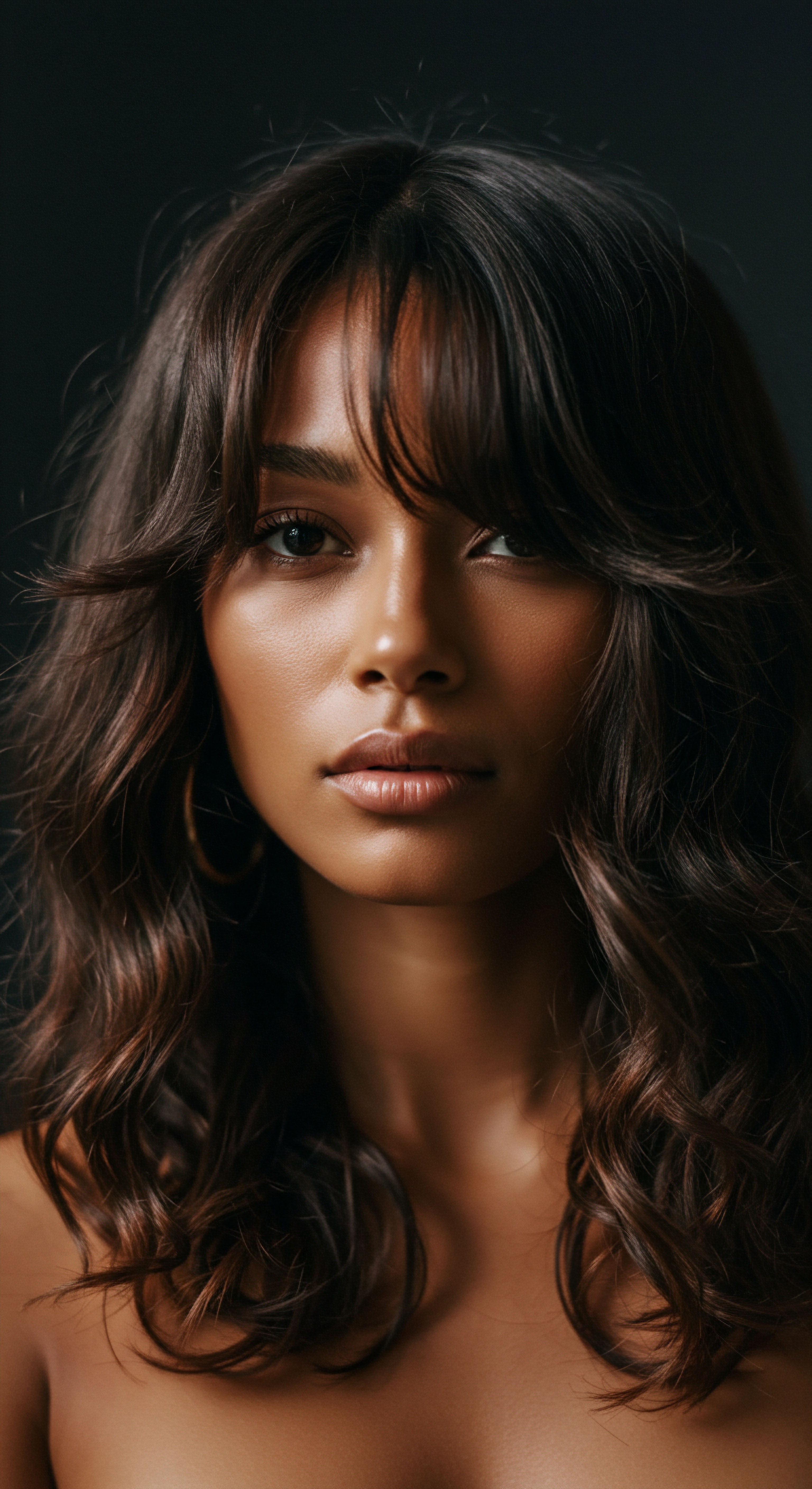
Relay
Beyond the comforting feel of a freshly conditioned strand and the visible sheen that catches the light, lies a more profound question ❉ can silk proteins truly mend the deeper fractures within hair, or are they merely a beautiful veil over underlying vulnerabilities? The pursuit of genuine hair repair demands a scientific lens, one that examines the interplay of molecular size, structural integration, and the very definition of “reversal.” This section delves into the intricate details, connecting the cosmetic with the cellular, and asking whether these natural wonders truly restore what is lost.

Can Silk Proteins Penetrate the Hair Cortex?
The core distinction between temporary relief and true reversal hinges on the ability of silk proteins to penetrate beyond the cuticle and into the hair’s cortex, where the bulk of structural damage occurs. Hair’s internal architecture, particularly the cortex, is composed of tightly packed keratin bundles. For external proteins to “repair” this internal structure, they must be small enough to pass through the cuticle and then integrate with the existing keratin.
Many sources claim that hydrolyzed silk proteins, due to their reduced molecular weight, can penetrate the hair shaft and repair damage from within. However, the scientific literature presents a more nuanced view. While smaller protein fragments, such as amino acids or very low molecular weight peptides (typically below 1000 Da), may indeed enter the hair shaft, larger protein molecules primarily remain on the surface.
A study exploring the performance of hydrolyzed keratin for hair photoaging prevention, for instance, indicated that while some small molecules from highly hydrolyzed keratin could permeate the hair cortex, the majority tended to accumulate and deposit on the hair cuticle due to their larger molecular weight. This suggests a similar dynamic for silk proteins; their efficacy in deep structural repair is often limited by their size. The concept of “repairing” the damaged keratin region by cationic structured hydrolyzed silk protein is often described as forming a film or wrapping the hair, which moisturizes and takes action against breakage, implying a surface or superficial interaction rather than deep internal restructuring.
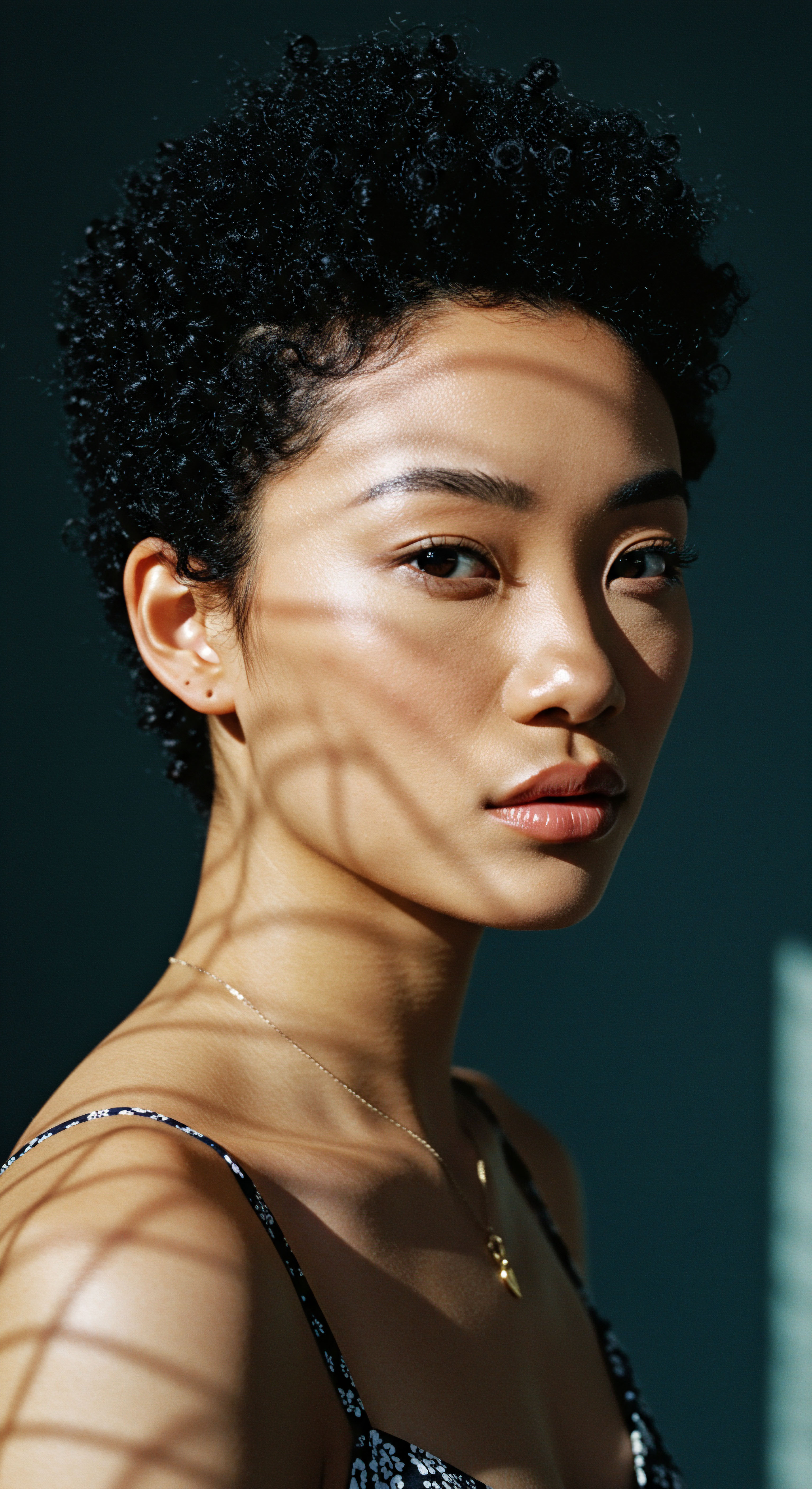
The Limits of “Reversal” in Hair Damage
The term “reversal” in hair care can be misleading. Hair, being a non-living tissue, cannot biologically heal itself in the way skin does. Once the disulfide bonds within the keratin structure are broken, or the cuticle scales are severely compromised, external applications cannot fully re-form these original, strong bonds or seamlessly re-attach the cuticle in its pristine state. What topical treatments, including those with silk proteins, achieve is often a form of cosmetic mending and temporary strengthening.
Consider this perspective:
- Cosmetic Mending ❉ Silk proteins can fill in gaps and rough spots on the cuticle, creating a smoother surface. This makes hair feel stronger and look healthier.
- Protective Layer ❉ They form a protective film that shields hair from further environmental or mechanical stress, thus preventing new damage.
- Moisture Support ❉ By attracting and retaining water, they improve hair’s flexibility and reduce brittleness, making it less prone to snapping.
These actions are valuable for maintaining hair health and improving its appearance, but they do not typically equate to a complete restoration of the hair’s original, undamaged internal structure. The effects are largely transient, washing away over time and requiring consistent application to maintain benefits. This aligns with the understanding that while hydrolyzed silk proteins can soften hair strands and address breakage, this is often attributed to their film-forming characteristics and ability to retain moisture.
While silk proteins offer remarkable cosmetic benefits and surface protection, their capacity for deep structural reversal of hair damage remains a subject of ongoing scientific discussion, largely limited by molecular size.
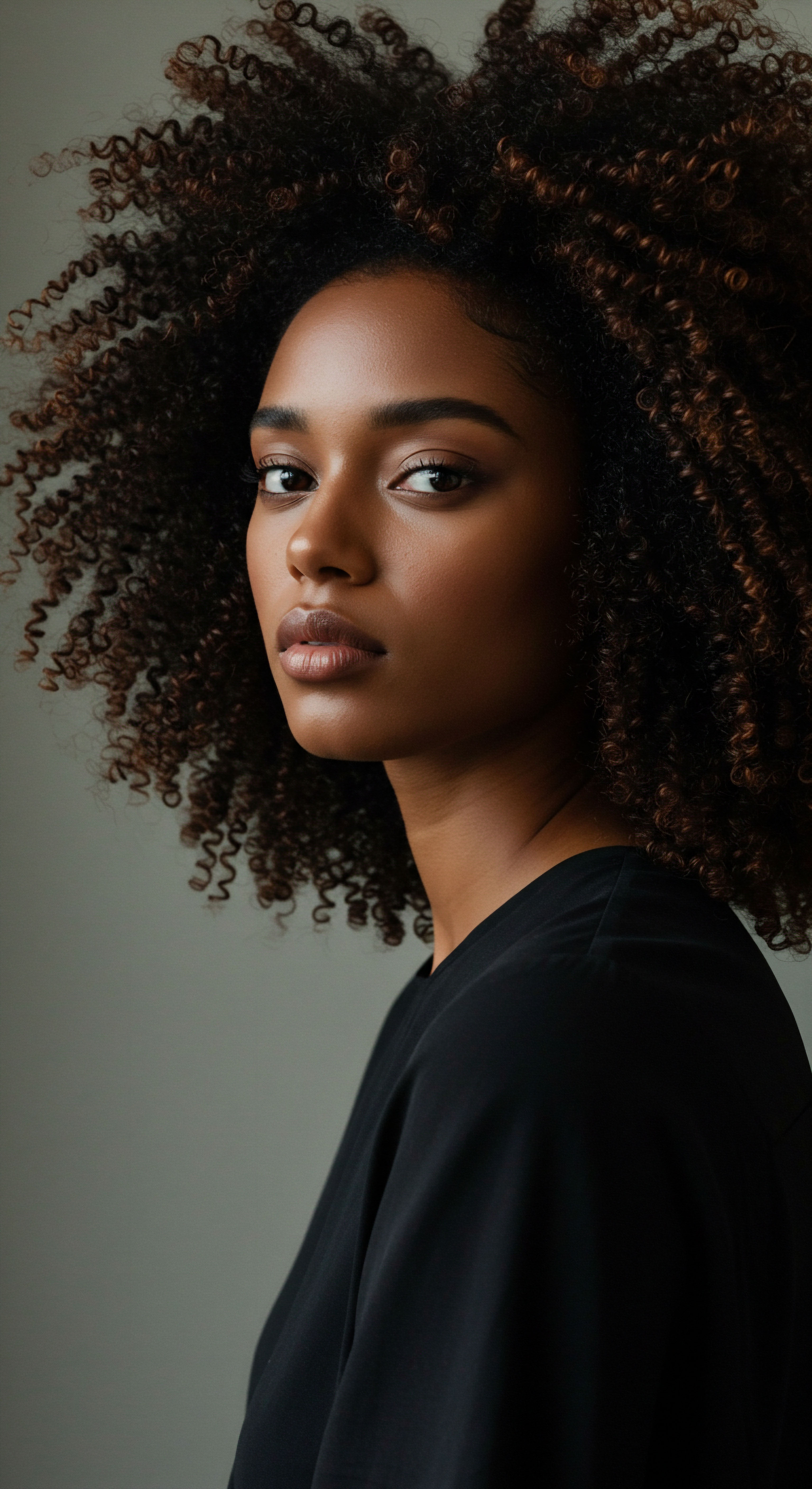
The Interplay with Textured Hair
For textured hair, the conversation around “damage reversal” takes on particular significance. Coily, curly, and wavy strands are inherently more prone to dryness and breakage due to their structural characteristics, such as the natural lifting of the cuticle at the curves of the strand. This makes surface conditioning and moisture retention even more vital. Silk proteins, by providing a smooth, protective coating and attracting moisture, can significantly aid in the management and protection of textured hair, even if the “repair” is not a deep, structural one.
From a cultural standpoint, the emphasis on healthy, well-maintained textured hair often transcends mere aesthetics; it speaks to self-care, heritage, and resilience. Products that offer even temporary improvements in manageability, softness, and shine can greatly contribute to a positive hair experience and help prevent the cumulative damage that can result from constant manipulation of dry, brittle strands. Therefore, while silk proteins may not reverse damage in the sense of molecular reconstruction, their role in maintaining hair’s well-being and preventing further harm is undeniable and culturally significant.
To illustrate the varying penetration capabilities of proteins based on molecular weight, consider this comparison:
| Protein Type Amino Acids |
| Typical Molecular Weight (Da) < 500 |
| Primary Hair Interaction Potential deep cortex penetration |
| Effect on Hair Internal strengthening, moisture retention |
| Protein Type Hydrolyzed Silk Peptides (low MW) |
| Typical Molecular Weight (Da) < 1000 |
| Primary Hair Interaction Cuticle and some cortex penetration |
| Effect on Hair Surface smoothing, improved elasticity, moisture binding |
| Protein Type Hydrolyzed Silk Proteins (higher MW) |
| Typical Molecular Weight (Da) 1000 – 50,000 |
| Primary Hair Interaction Primarily cuticle deposition |
| Effect on Hair Film-forming, surface protection, shine |
| Protein Type Intact Proteins (e.g. native keratin) |
| Typical Molecular Weight (Da) 50,000 |
| Primary Hair Interaction Surface coating only |
| Effect on Hair External conditioning, frizz reduction |
| Protein Type Smaller molecular weights allow for deeper, though still limited, internal interaction. |
The efficacy of silk proteins, then, resides in their capacity to provide a highly effective form of temporary relief and preventative care, rather than a true biological “reversal” of damage. They are powerful allies in maintaining hair’s condition, enhancing its appearance, and protecting it from the rigors of daily life, particularly for hair types that benefit greatly from external conditioning and moisture support.

Reflection
The journey through the intricate world of silk proteins and their interaction with hair reveals a nuanced landscape. We began with a quiet wonder at the resilience of hair, particularly textured hair, and sought to understand whether silk proteins could truly mend what time and styling had compromised. The answer, as it often is with natural science and human experience, is not a simple yes or no, but a rich tapestry of capabilities and limitations.
Silk proteins, in their hydrolyzed forms, offer a remarkable suite of benefits that address the visible and tactile signs of hair damage. They act as skilled artisans, smoothing rough cuticles, providing a luminous sheen, and granting a softness that makes daily care a more gentle experience. Their ability to attract and hold moisture is a significant advantage, particularly for hair that craves hydration, lending a temporary suppleness that reduces the likelihood of breakage. These are not trivial contributions; they improve the lived reality of hair health, making strands more manageable and outwardly vibrant.
Yet, the deeper structural “reversal” of damage, the complete re-formation of broken internal bonds, remains largely beyond the reach of topical applications. Hair, being a non-living fiber, does not possess the biological mechanisms for self-repair in the same manner as living tissue. The effectiveness of silk proteins lies more in their protective and ameliorative qualities—a steadfast shield against further harm and a comforting balm for existing superficial distress. They are guardians and comforters, not alchemists capable of turning back time on a molecular level.
Ultimately, the wisdom of hair care, especially for textured hair, rests in a holistic approach. It involves appreciating the visible improvements silk proteins offer while also understanding their scientific boundaries. It is about consistent, gentle care, listening to what our hair communicates, and selecting ingredients that support its well-being, whether through deep conditioning, surface protection, or moisture balance. The quiet strength of healthy hair is built not on singular miracles, but on a consistent rhythm of thoughtful attention and informed choices.
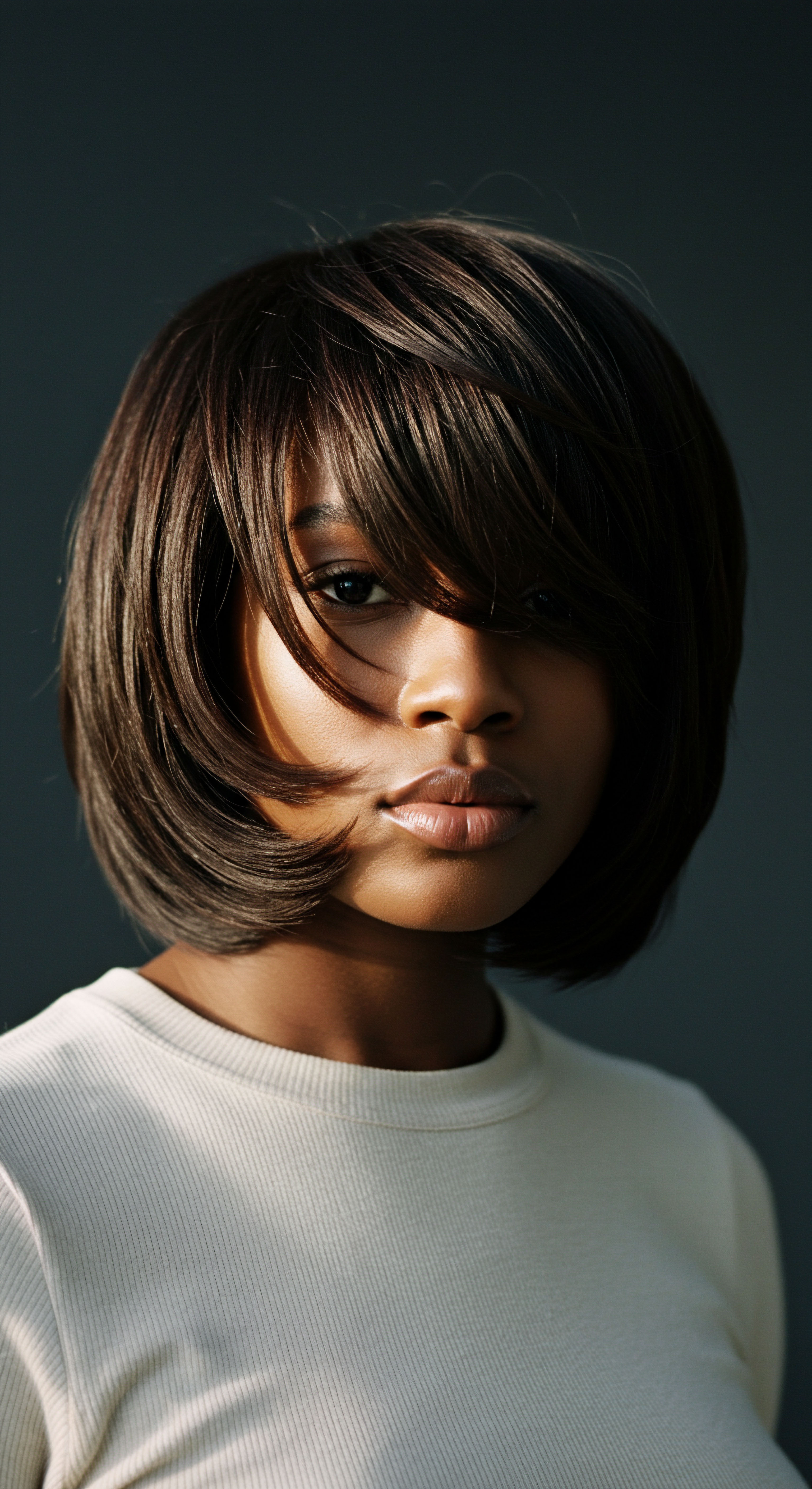
References
- Sakamoto, Kazutami, et al. Cosmetic Science and Technology ❉ Theoretical Principles and Applications. Elsevier, 2017.
- Robbins, Clarence R. Chemical and Physical Behavior of Human Hair. Springer, 2012.
- Sheng, Jia Yong, et al. “Study on the Application of Sericin in Cosmetics.” Advanced Materials Research, vol. 796, 2013, pp. 416-423.
- Tinoco, Mariana, et al. “Crystallin Fusion Proteins Improve the Thermal Properties of Hair.” Frontiers in Bioengineering and Biotechnology, vol. 7, 2019, Article 298.
- Qadir, Jasmeena, and Tajamul Islam. “Potential of Silk Proteins in Cosmetics.” Journal of Scientific Agriculture, vol. 8, 2024, pp. 9070.
- Malinauskyte, J. “Performance and Mechanism of Hydrolyzed Keratin for Hair Photoaging Prevention.” Molecules, vol. 30, 2025, p. 1182.
- FEBS Biotechnology. “Silk Protein in Hair Care.” FEBS Biotechnology, 2022.
- Sakamoto, Kazutami, Robert Y. Lochhead, Howard I. Maibach, and Yuji Yamashita. Cosmetic Science and Technology ❉ Theoretical Principles and Applications. Elsevier, 2017.
- Robbins, Clarence R. Chemical and Physical Behavior of Human Hair. Springer, 2012.
- Laatsch, C. N. & Duran, S. H. “Silk protein ❉ a review.” Journal of Cosmetic Dermatology, vol. 7, no. 1, 2008, pp. 8-14.